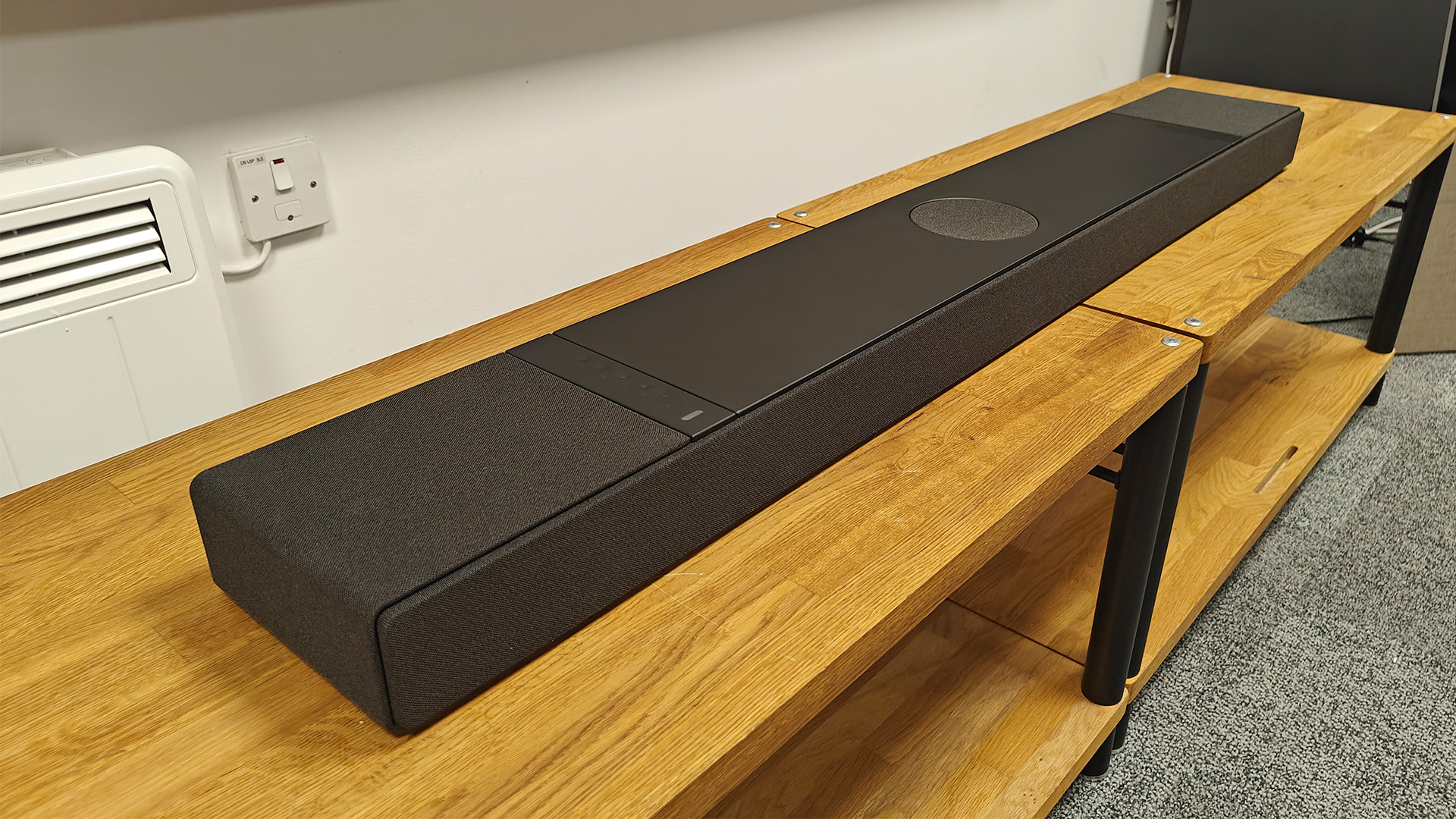The KEF XIO dethrones an old Sennheiser favourite as we crown it the best premium Dolby Atmos soundbar you can buy
A new winner steps up to the podium

Since 2019, the Sennheiser Ambeo Soundbar Max has been our favourite premium model when it comes to Dolby Atmos soundbars.
When we first reviewed it, we were blown away by its immersive and bass-heavy performance.
Because of this, it quickly became our top premium recommendation for those with deep pockets in our best Dolby Atmos soundbars buying guide.
Weighing 18.5kg and standing almost 1.3m wide, the Ambeo uses its extra space to fit in larger, more powerful drivers to produce a bigger sound than most competitors.
While that bulky design could be an issue for those with less space, it results in “bass being delivered with weighty gusto and seamless integration” as we discovered in our in-depth Sennheiser Ambeo Soundbar Max review.
In terms of its Dolby Atmos performance, we love its room-filling sound that draws you into a scene and dubbed it “encompassing and engaging to listen to.”
Its physical connectivity is a big draw, too, as the 5.1.4 soundbar includes three HDMI 2.0 inputs and one HDMI 2.1 port, which supports eARC.
The latest hi-fi, home cinema and tech news, reviews, buying advice and deals, direct to your inbox.
For years, it was simply the best soundbar at this price point of £2199 / $2500 / AU$4000.
That was until we recently tested the new KEF XIO. It has entered the arena and immediately knocked the Sennheiser off the top spot as the best premium Dolby Atmos soundbar.
But how has it managed to trump our old favourite?

First off, the KEF outperforms the Sennheiser in terms of producing an overall balanced sound. We say in our KEF XIO review: “The XIO’s ability to spread sound around the space feels incredibly natural, all while keeping each frequency clear and unmuddled.”
Even though it does not produce the same level of room-filling sound as the Sennheiser when we put them head-to-head, it “counters with more clarity, greater precision in the way sounds are rendered and notably more finesse in the way low-level dynamics are delivered.”
It performs excellently with music too. The XIO carries all the balance and excitement of its Movie EQ mode to the Music setting, meaning it can hold its own as a standalone music system.
There's a lot to like under the hood as well. Five of KEF's own Uni-Q MX drivers are being employed, with two upward-firing on top of the soundbar and three facing forwards.
Also, you have the built-in Velocity Control Technology (VECO) built into each drive unit.
This is a flexible PCB printed with a sensing coil that takes the place of a traditional former (the component that the main coil wraps around) and measures the speed of movement. It allows the soundbar’s ‘brain’ to compensate for any errors detected.
In terms of cost, the KEF model will set you back £1999 / $2500 / AU$3600, which is around what you can get the Sennheiser for at the time of writing. And, our money would go on the XIO.
The KEF does, however, lack the HDMI inputs that we so enjoyed with the Sennheiser, which is a drawback for those wanting to have all their sources running into the soundbar. It has to settle for a single HDMI 2.1 eARC socket.
Overall, though, the KEF XIO provides a more balanced and transparent listening experience than the still mighty Sennheiser. All hail our new premium Dolby Atmos champion!
MORE:
Read our full KEF XIO review
And our full Sennheiser Ambeo Soundbar Max review
These are the 36 best Dolby Atmos scenes to test your home cinema system
Robyn Quick is a Staff Writer for What Hi Fi?. After graduating from Cardiff University with a postgraduate degree in magazine journalism, they have worked for a variety of film and culture publications. In their spare time, Robyn can be found playing board games too competitively, going on cinema trips and learning muay thai.
You must confirm your public display name before commenting
Please logout and then login again, you will then be prompted to enter your display name.

